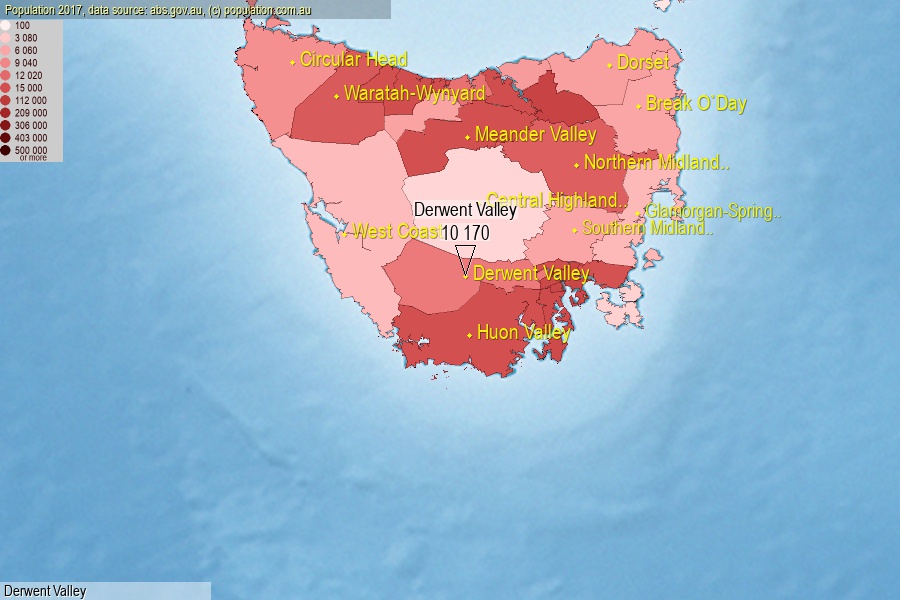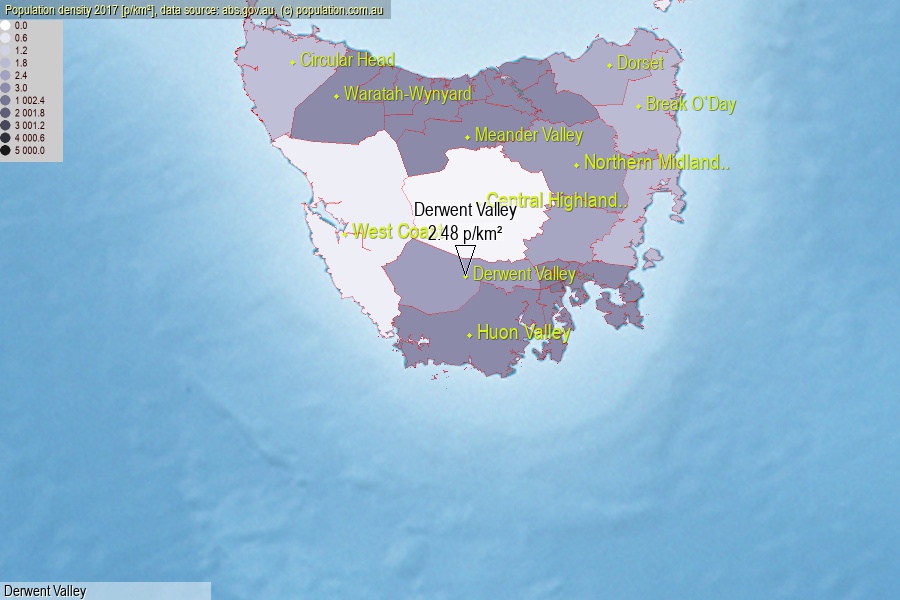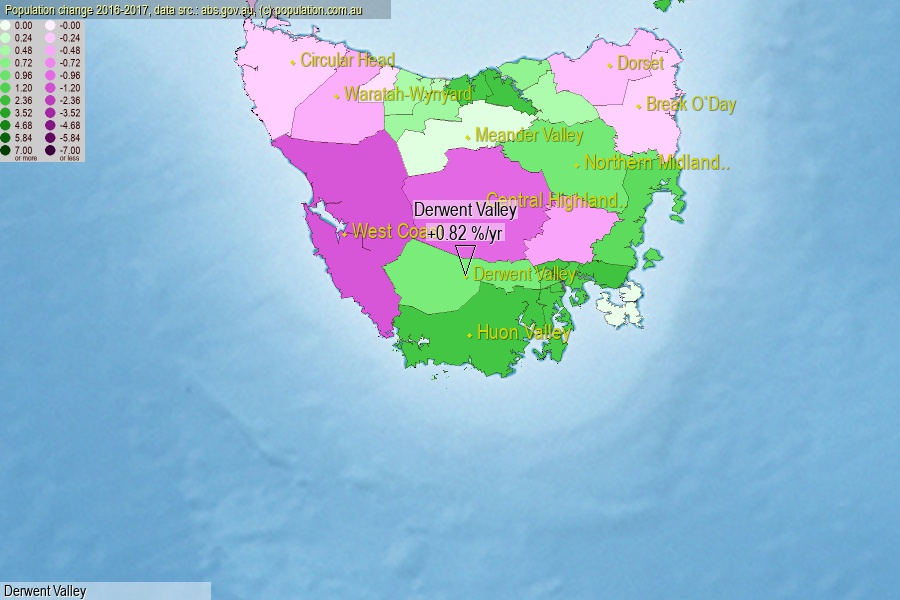 population.com.au
population.com.auLast official estimated population of Derwent Valley Municipality (as Local Government Area) was 10 170 people (on 2017-06-30)[2]. This was 0.04% of total Australian population and 1.931% of TAS population. Area of Derwent Valley is 4 108.10 km², in this year population density was 2.48 p/km² . If population growth rate would be same as in period 2016-2017 (+0.82%/yr), Derwent Valley population in 2025 would be 10 859. [0]



Click to enlarge. Derwent Valley is located in the center of the images.
Population [people], population density [p./km²] and population change [%/year] [2]
[1996-2001] -1.03 %/Y
[2001-2002] -0.28 %/Y
[2002-2003] +0.58 %/Y
[2003-2004] +0.22 %/Y
[2004-2005] +1.26 %/Y
[2005-2006] +1.01 %/Y
[2006-2007] +0.72 %/Y
[2007-2008] +0.96 %/Y
[2008-2009] +0.64 %/Y
[2009-2010] +0.34 %/Y
[2010-2011] +0.52 %/Y
[2011-2012] -0.01 %/Y
[2012-2013] +0.32 %/Y
[2013-2014] +0.36 %/Y
[2014-2015] +0.35 %/Y
[2015-2016] +0.39 %/Y
[2016-2017] +0.82 %/Y
[0] Calculated with linear interpolation from officially estimated population
[1] Read more about LGA and Australian Statistical Geography Standard (ASGS) on abs.gov.au
[2] Population data from Australian Bureau of Statistics (Population and density: 2017; change: 2016-2017)
[3] Digital Boundaries: Australian Statistical Geography Standard (ASGS) 2016.